Abstract
We present a computer method utilizing published values for base pairing energies to compute the most energetically favorable secondary structure of an RNA from its primary nucleotide sequence. After listing all possible double-helical regions, every pair of mutally incompatible regions (whose nucleotides overlap) is examined to determine whether parts of those two regions can be combined by branch migration to form a pair of compatible new subregions which together are more stable than either of the original regions separately. These subregions are added to the list of base pairing regions which will compete to form the best overall structure. Then, a 'hyperstructure matrix' is generated, containing the unique topological relationship between every pair of regions. We have shown that the best structure can be chosen directly from this matrix, without the necessity of creating and examing every possible secondary structure. We have included the results from our solution of the 5S rRNA of the cyanobacterium Anacystis nidulans as an example of our program's capabilities.
Full text
PDF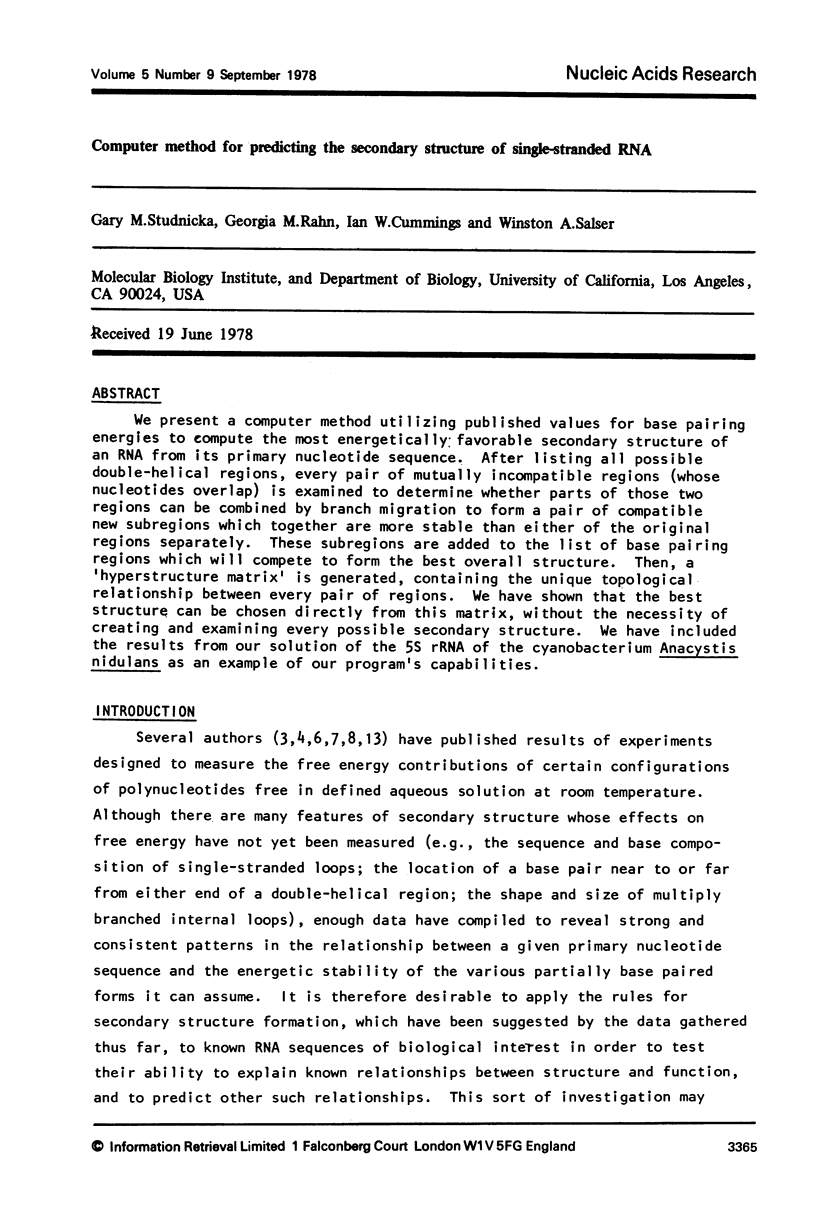

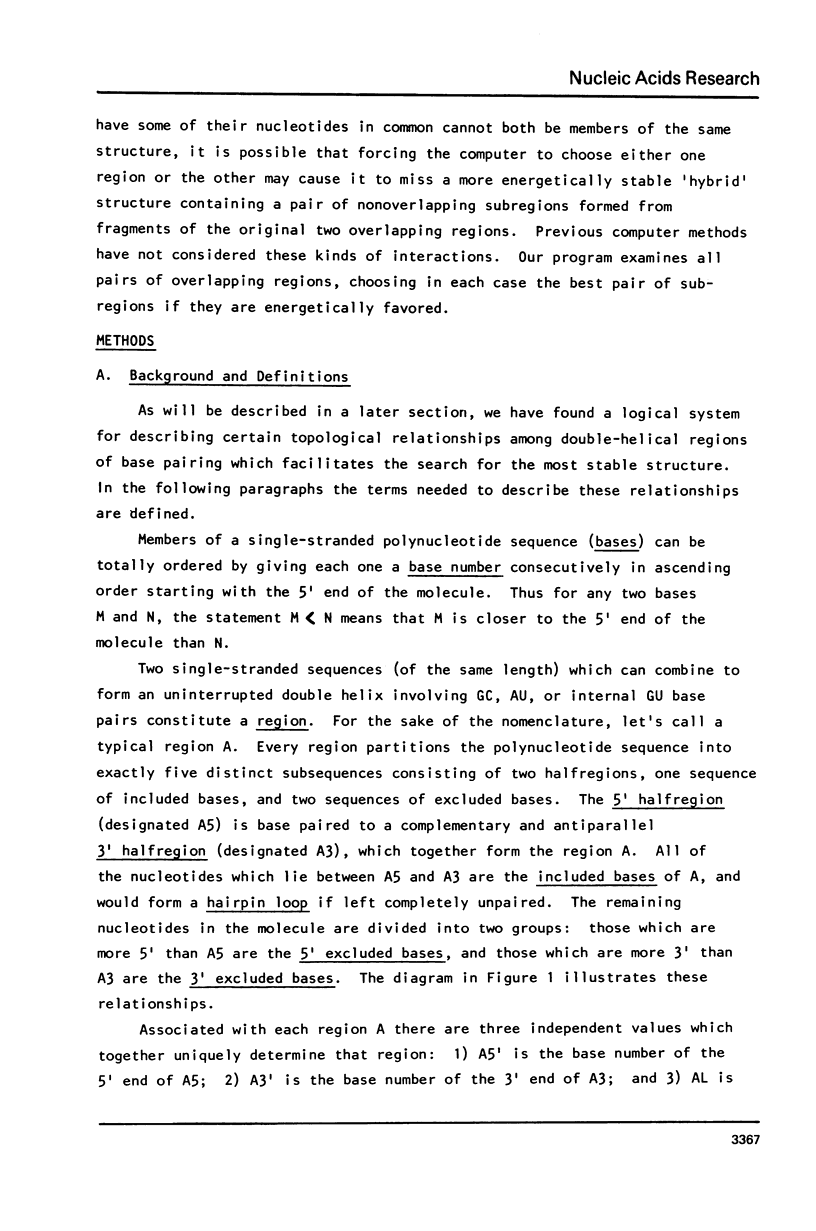




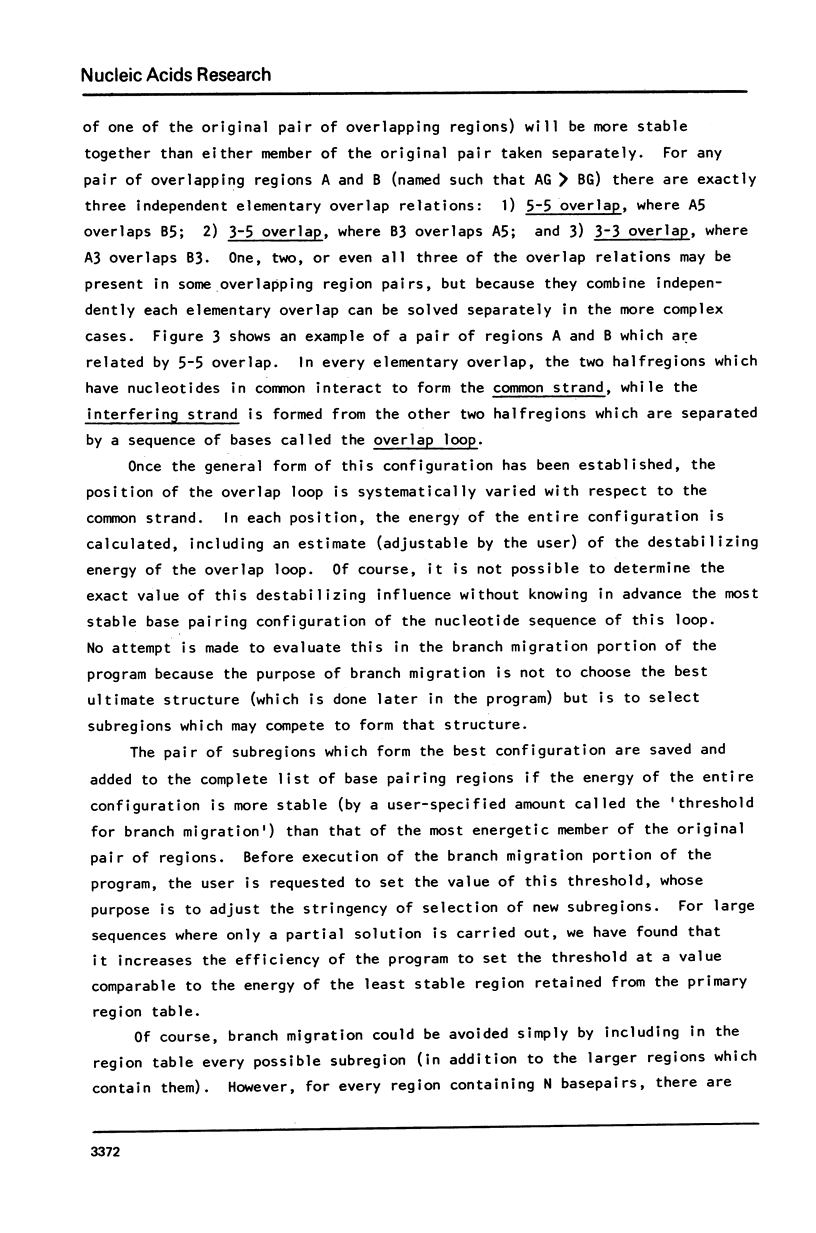
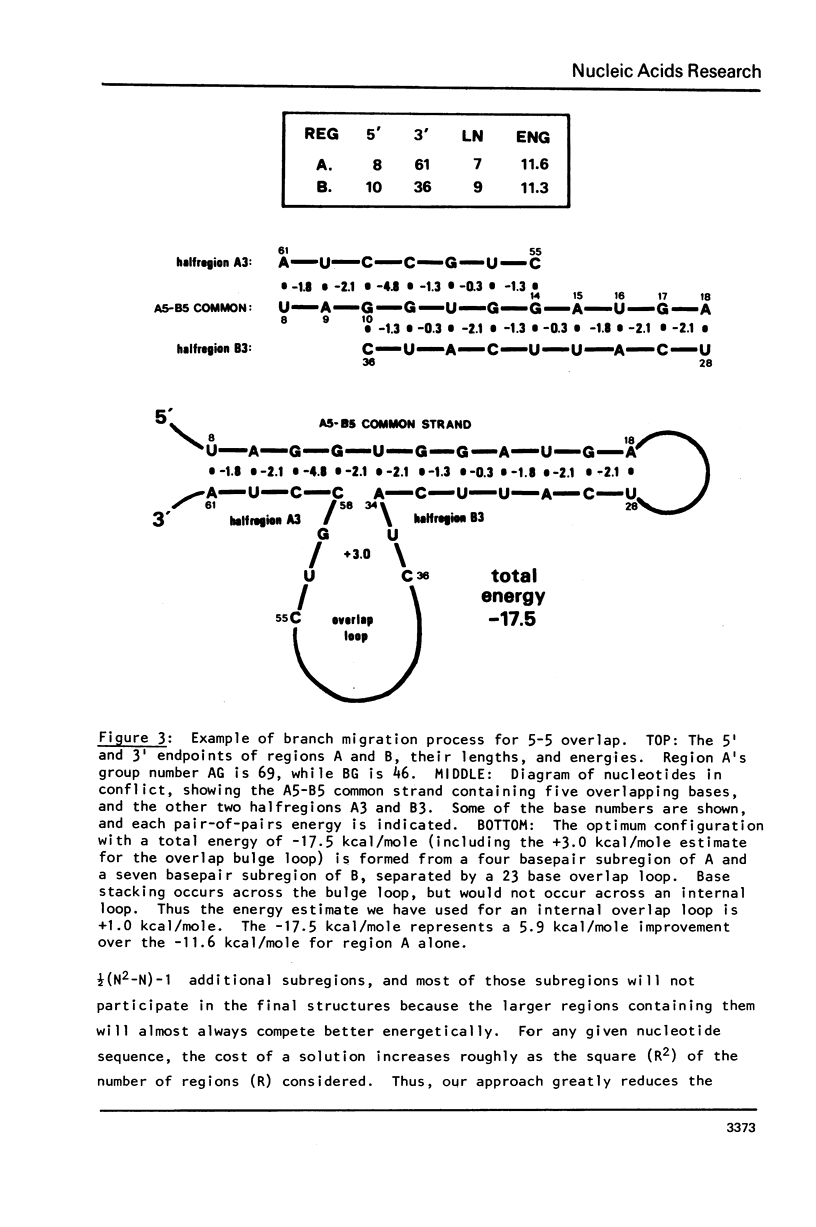

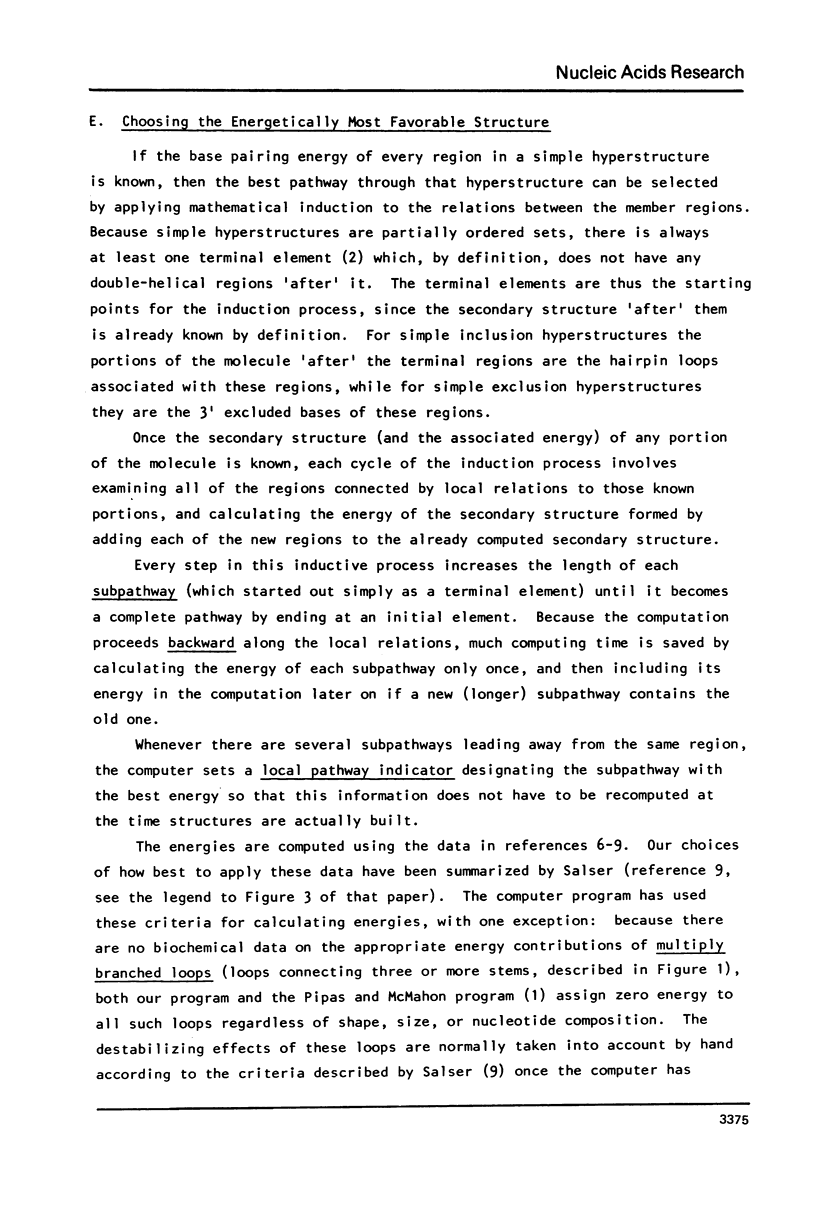
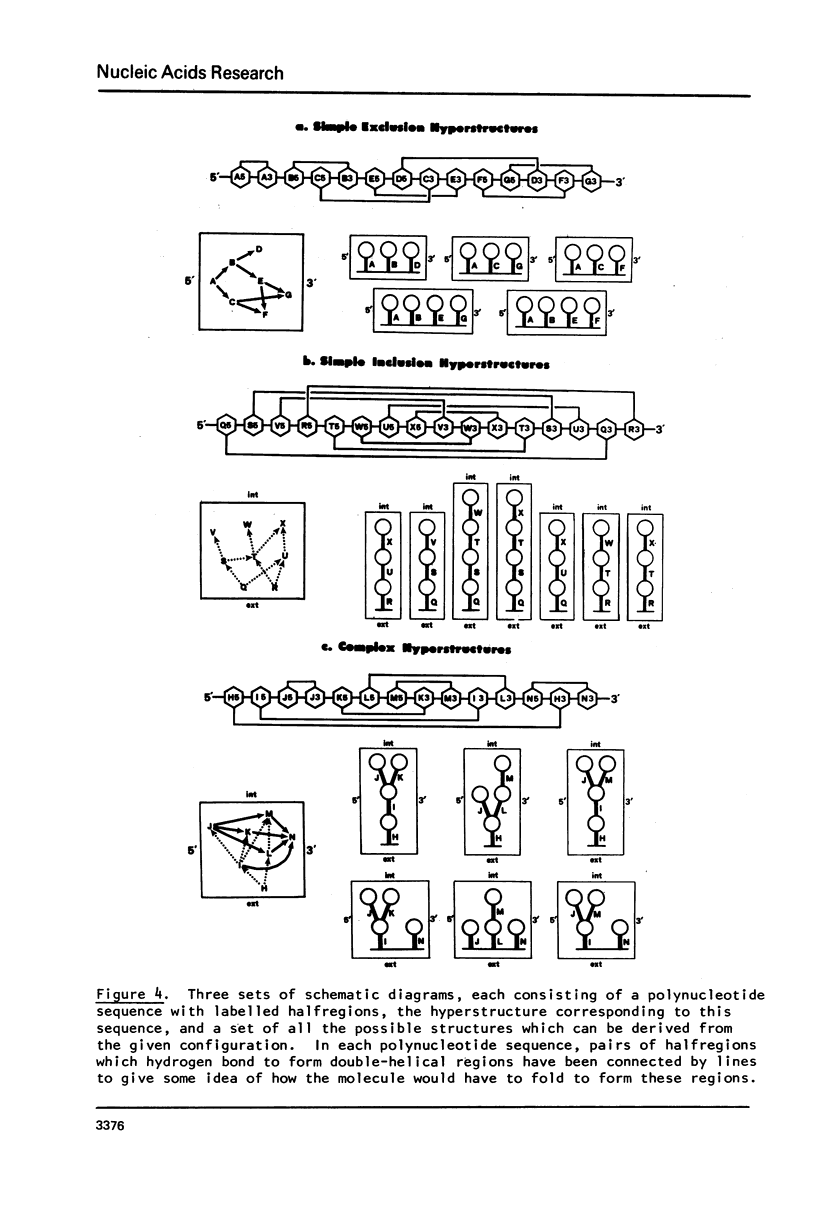



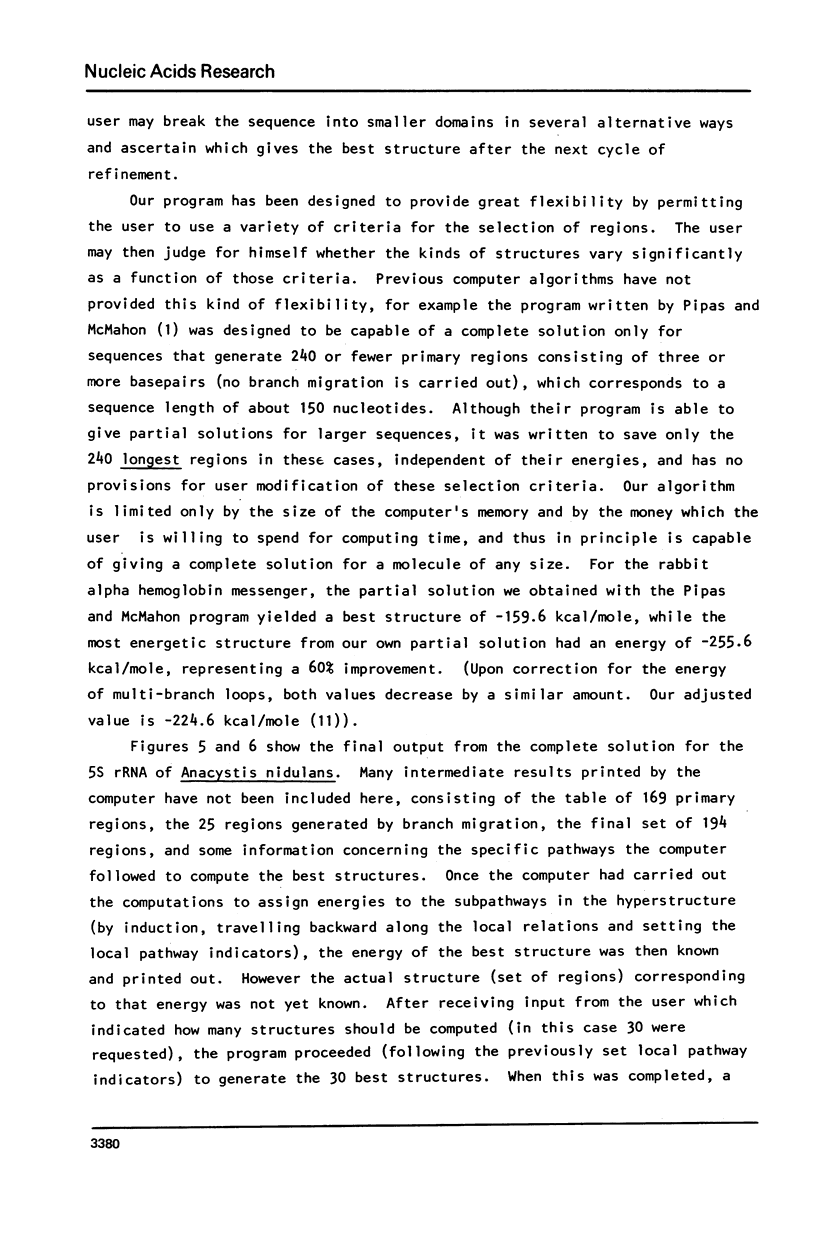

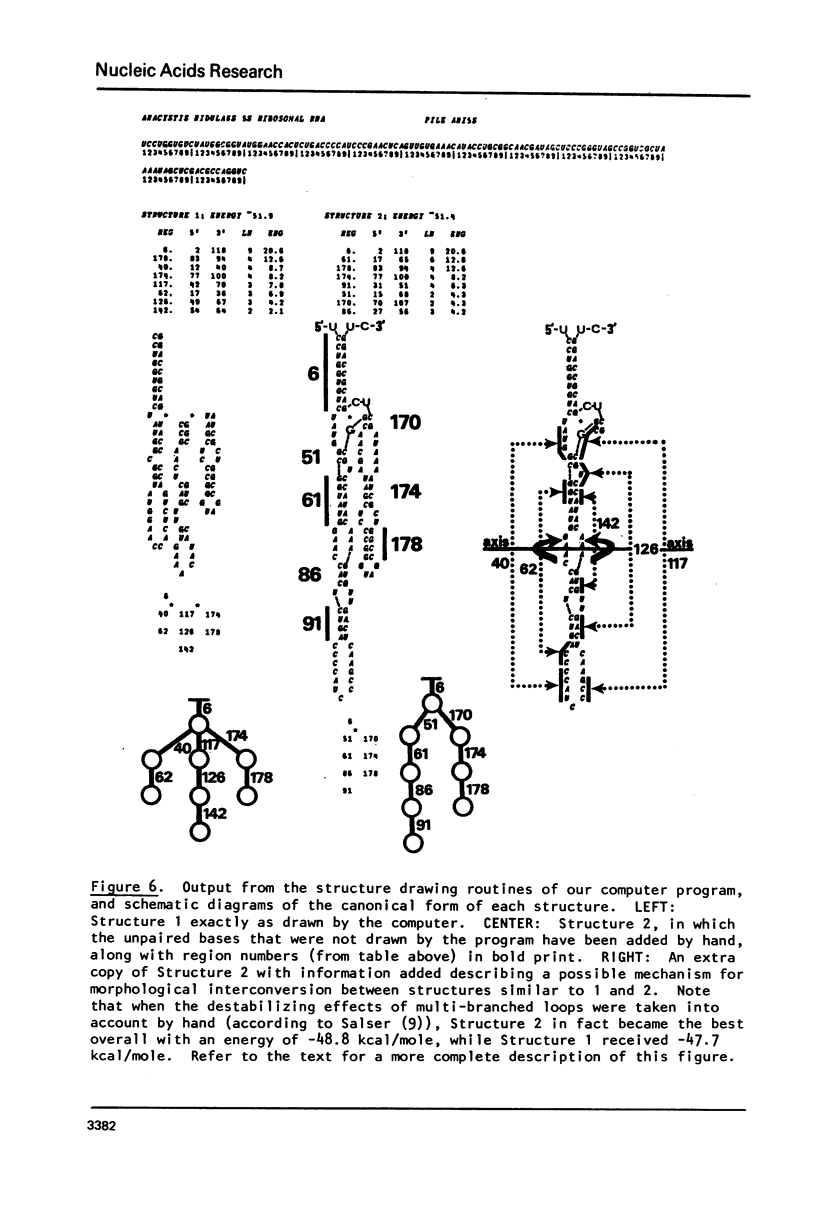
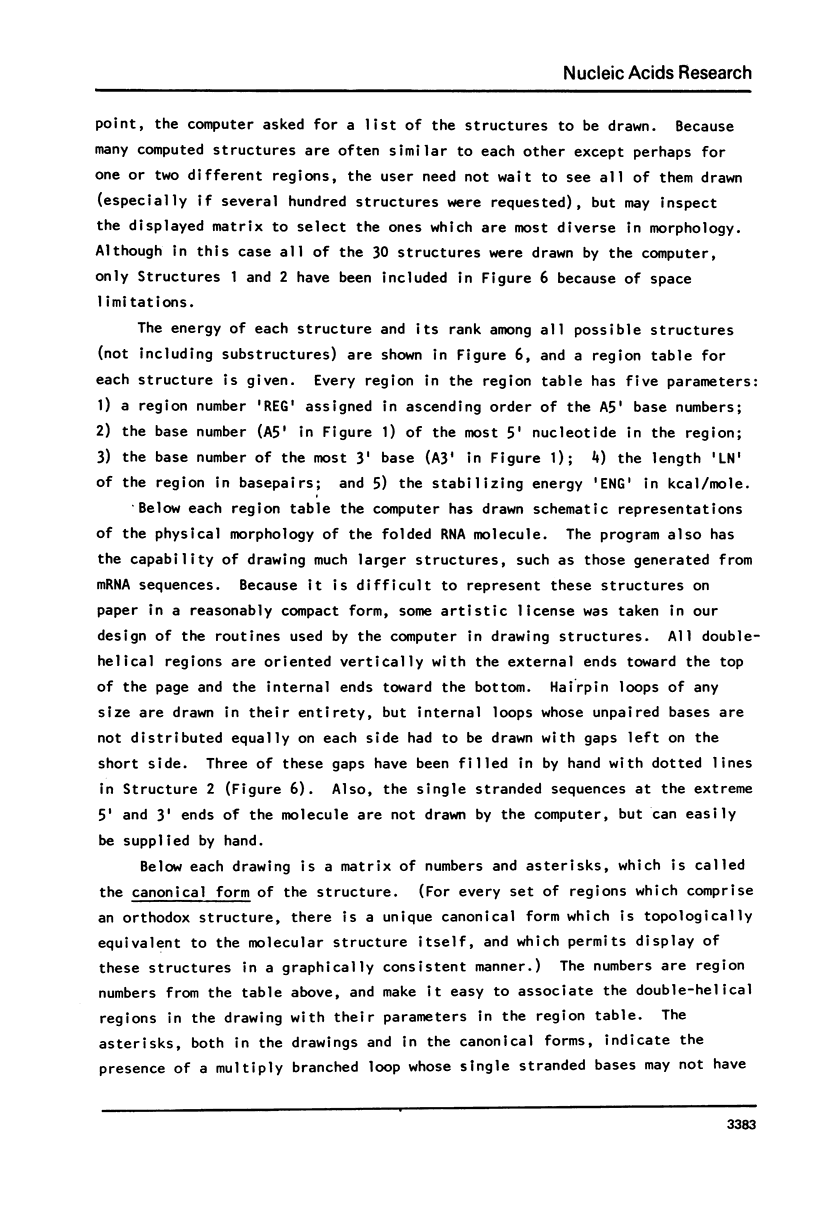

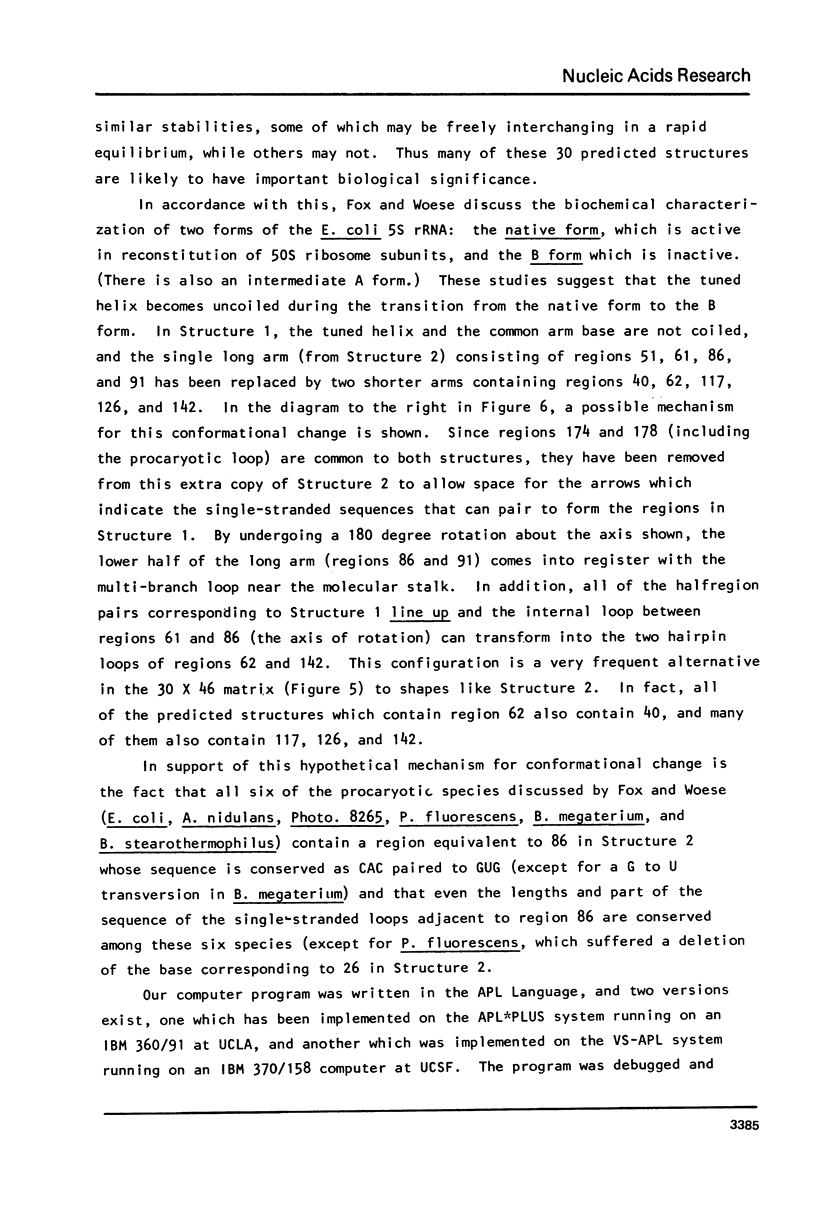

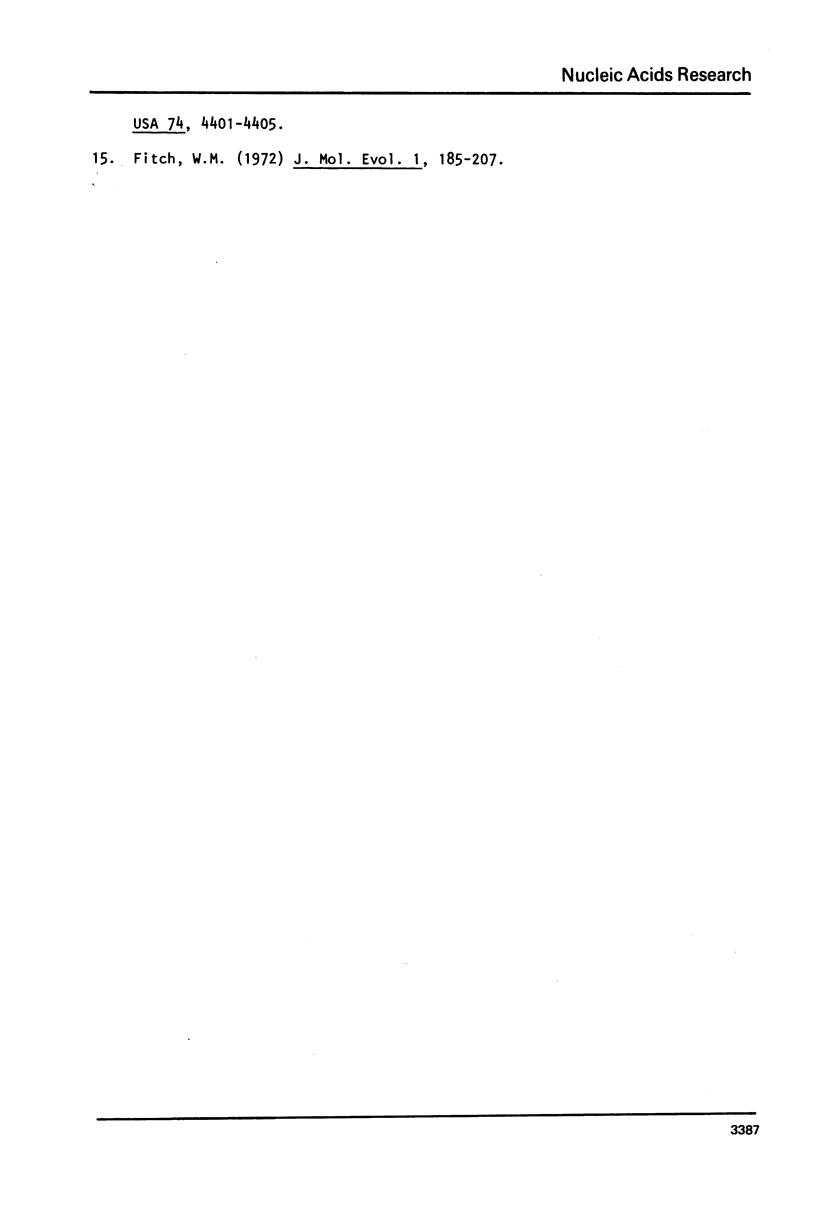
Selected References
These references are in PubMed. This may not be the complete list of references from this article.
- Borer P. N., Dengler B., Tinoco I., Jr, Uhlenbeck O. C. Stability of ribonucleic acid double-stranded helices. J Mol Biol. 1974 Jul 15;86(4):843–853. doi: 10.1016/0022-2836(74)90357-x. [DOI] [PubMed] [Google Scholar]
- Corry M. J., Payne P. I., Dyer T. A. The nucleotide sequence of 5 S rRNA from the blue-green alga Anacystis nidulans. FEBS Lett. 1974 Sep 15;46(1):63–66. doi: 10.1016/0014-5793(74)80335-2. [DOI] [PubMed] [Google Scholar]
- Delisi C., Crothers D. M. Prediction of RNA secondary structure. Proc Natl Acad Sci U S A. 1971 Nov;68(11):2682–2685. doi: 10.1073/pnas.68.11.2682. [DOI] [PMC free article] [PubMed] [Google Scholar]
- Fitch W. M. Considerations regarding the regulation of gene transcription and messenger translation. J Mol Evol. 1971;1(1):185–207. [PubMed] [Google Scholar]
- Fox G. E., Woese C. R. The architecture of 5S rRNA and its relation to function. J Mol Evol. 1975 Oct 3;6(1):61–76. doi: 10.1007/BF01732674. [DOI] [PubMed] [Google Scholar]
- Gralla J., Crothers D. M. Free energy of imperfect nucleic acid helices. 3. Small internal loops resulting from mismatches. J Mol Biol. 1973 Aug 5;78(2):301–319. doi: 10.1016/0022-2836(73)90118-6. [DOI] [PubMed] [Google Scholar]
- Gralla J., Crothers D. M. Free energy of imperfect nucleic acid helices. II. Small hairpin loops. J Mol Biol. 1973 Feb 5;73(4):497–511. doi: 10.1016/0022-2836(73)90096-x. [DOI] [PubMed] [Google Scholar]
- Pipas J. M., McMahon J. E. Method for predicting RNA secondary structure. Proc Natl Acad Sci U S A. 1975 Jun;72(6):2017–2021. doi: 10.1073/pnas.72.6.2017. [DOI] [PMC free article] [PubMed] [Google Scholar]
- Tinoco I., Jr, Borer P. N., Dengler B., Levin M. D., Uhlenbeck O. C., Crothers D. M., Bralla J. Improved estimation of secondary structure in ribonucleic acids. Nat New Biol. 1973 Nov 14;246(150):40–41. doi: 10.1038/newbio246040a0. [DOI] [PubMed] [Google Scholar]
- Tinoco I., Jr, Uhlenbeck O. C., Levine M. D. Estimation of secondary structure in ribonucleic acids. Nature. 1971 Apr 9;230(5293):362–367. doi: 10.1038/230362a0. [DOI] [PubMed] [Google Scholar]


